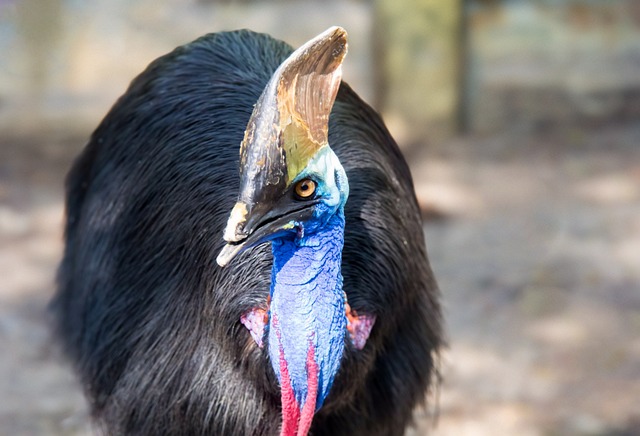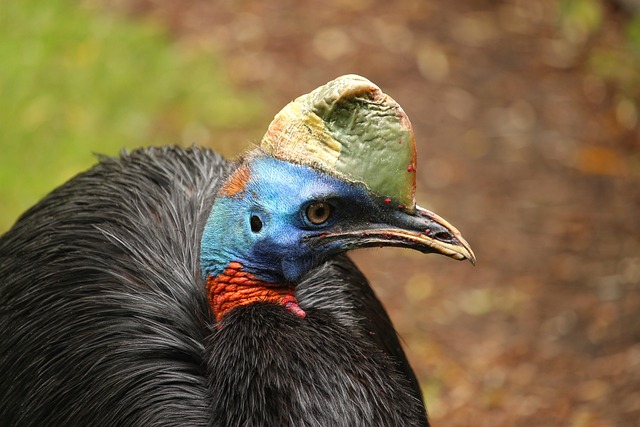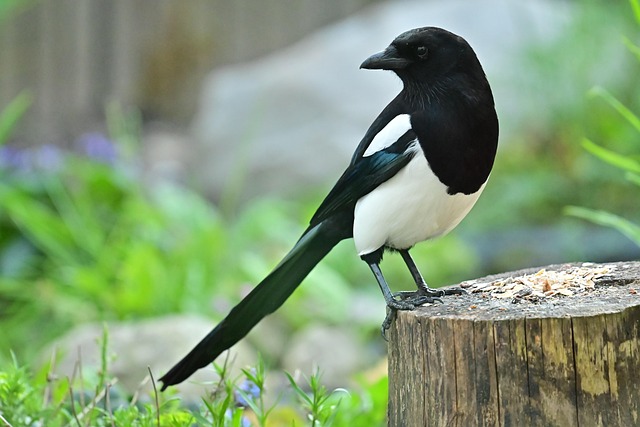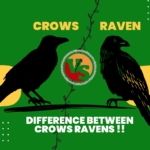Cassowaries are one of the most mysterious and exotic birds that exist in the tropical rainforests of Australia, New Guinea and surrounding islands. Noted for its bright appearance, powerful legs, and helmet-like casque, the cassowary is a bird considered dangerous among the list of the most hazardous birds on the planet. However, they are vital to the maintenance of the rainforest ecosystem. In this article, we will discuss everything about cassowaries, including detailed biodata table, interesting facts and conclusion of importance in nature.
Cassowaries Bird: Know Everything About This Flightless Bird

| Attribute | Details |
|---|---|
| Common Name | Cassowary |
| Scientific Name | Casuarius |
| Kingdom | Animalia |
| Phylum | Chordata |
| Class | Aves |
| Order | Casuariiformes |
| Family | Casuariidae |
| Genus | Casuarius |
| Species | Casuarius casuarius (Southern Cassowary), Casuarius unappendiculatus (Northern Cassowary), Casuarius bennetti (Dwarf Cassowary) |
| Conservation Status | Vulnerable (IUCN Red List) |
| Habitat | Tropical rainforests, mangroves, grasslands |
| Geographical Range | Australia, Papua New Guinea, Indonesia |
| Height | 1.5 – 2 meters (4.9 – 6.6 feet) |
| Weight | 30 – 60 kg (66 – 132 lbs) |
| Lifespan | 40-50 years in the wild |
| Diet | Fruits, fungi, insects, small vertebrates |
| Reproductive System | Polygamous |
| Nesting Season | June – October |
| Eggs Laid | 3 – 5 eggs per clutch |
| Incubation Period | 50 days |
| Parental Care | Males incubate eggs and care for chicks |
| Predators | Dingoes, crocodiles, feral pigs, humans |
| Unique Feature | Helmet-like casque on the head |
| Primary Threats | Habitat destruction, hunting, road accidents |
| Running Speed | Up to 50 km/h (31 mph) |
| Jumping Ability | Can jump up to 1.5 meters (5 feet) |
| Swimming Ability | Excellent swimmers |
| Communication | Low-frequency booming calls |
| Social Structure | Solitary |
| Leg Strength | Powerful legs with sharp claws |
| Defense Mechanism | Kicking with dagger-like claws |
| Size of Claws | Middle claw can grow up to 12 cm (5 inches) |
| Role in Ecosystem | Seed disperser |
| Cultural Significance | Revered in Indigenous Australian culture |
| Domestication | Not domesticated due to aggression |
| Danger Level | One of the most dangerous birds |
| First Scientific Description | 1758 by Carl Linnaeus |
| Fossil Records | Existed for millions of years |
| Relation to Dinosaurs | Considered a close relative of extinct theropods |
| Legal Protection | Protected species in Australia |
| Tourist Attraction | Found in wildlife parks and reserves |
| Notable Reserves | Daintree Rainforest, Eubenangee Swamp National Park |
| Weight of Eggs | About 650 grams (1.4 lbs) each |
| Skin Type | Feathers resembling coarse hair |
| Primary Food Sources | Fruits of at least 238 plant species |
| Beak Shape | Short and curved |
| Wingspan | Small, undeveloped wings |
| Flight Capability | Flightless |
| Adaptations for Survival | Camouflaging in dense forests |
| Migration Patterns | Non-migratory |
| Maturity Age | 3-4 years |
| Population Estimate | Fewer than 10,000 individuals |
| Interaction with Humans | Rare but can be aggressive if provoked |
| Disease Susceptibility | Susceptible to avian diseases |
| Common Nickname | “Modern-day Velociraptor” |
| Crest Function | Possibly for communication or dominance |
| Skin Color on Neck | Blue, red, and yellow |
| Foot Structure | Three toes with sharp claws |
| Daily Activity | Most active during early morning and late afternoon |
| Breeding Frequency | Once per year |
| Threatened by Climate Change | Yes, due to habitat loss |
| Population Trend | Decreasing |
| Recorded Attacks on Humans | Rare but can be fatal |
10+ Fascinating Facts About Cassowaries
- These are among the world’s most dangerous birds. Their powerful legs and dagger-like claws can deal some serious wounds.
- They look prehistoric. Its casque is like the crest of one of the extinct dinosaurs.
- This bird is critical to seed dispersal. They eat huge amounts of fruit and defecate seeds, thus promoting forest regeneration.
- The male cassowaries incubate the eggs and care for the chicks. Females do not participate in raising their young, unlike most birds.
- They are very good swimmers. Cassowaries can swim across rivers and even in the ocean.
- Their booming calls can travel long distances. These low-frequency sounds are used for communication in dense rainforests.
- Cassowaries can run at high speeds. They can reach up to 50 km/h (31 mph) when threatened.
- They can jump as high as 1.5 meters or 5 feet to avoid predators and jump through thick forests.
- Their casque, which is the helmet-like feature on their head, has not been explained by scientists. Some believe it is used for receiving sound, asserting dominance, or protection.
- Millions of years have passed since the cassowaries were born. They existed during the age of dinosaurs.
- They consume over 238 species of plants. They feed on fruits, fungi, and other small animals.
- They are solitary animals. The cassowaries only come together during mating or to defend a territory.
FAQ’s
Cassowaries are large, flightless birds that inhabit the rainforests of Australia, New Guinea, and surrounding islands. These birds are very attractive, with a helmet-like casque and bright colors, and they play an important role in seed dispersal. Despite their beauty, cassowaries are also one of the most dangerous birds due to their powerful legs and sharp claws.
Yes. One of the most dangerous birds in the world is the cassowary. They possess very strong legs with sharp claws and an impressive dagger-like middle claw, which can grow up to 12 cm (5 inches). In their self-defence against a human threat, they may inflict fatal or serious injuries through their powerful kicks. Still, the bird is shy by nature and usually avoids human contact unless provoked.
Indeed, cassowary eggs are green! They appear bright pale green to bluish-green and tend to camouflage into the forest floor, therefore serving as a natural camouflage from predators. This particular coloration is also different for other birds’ eggs.
A cassowary’s kick is very strong, capable of breaking bones and causing serious damage. With muscular legs, it can deliver very forceful kicks that can knock down or kill a human being. Its middle claw is like a dagger; it can grow up to 12 cm (5 inches) long and may cause deep wounds, making this bird one of the most dangerous in the world.
The global population of the cassowary is estimated to be less than 10,000 individuals from the three species, which include the Southern Cassowary, Northern Cassowary, and Dwarf Cassowary. The best-studied species, the Southern Cassowary, has 4,000 individuals remaining in the wild, mainly found in Australia and New Guinea. The population decline is attributed to habitat loss, hunting, and urban road accidents. Conservation efforts are thus important to their survival.
Conclusion
This species is an outstanding one, blending beauty, mystery, and danger. Ancient birds, cassowaries are critical to their ecosystems, being responsible for seed dispersal. However, they seem to be associated with fear as they play an important role in maintaining the health of tropical rainforests, though their populations are declining owing to habitat destruction, hunting, and road accidents. Conservation efforts are essential to ensure the survival of these magnificent birds for future generations. Whether viewed as prehistoric or feared because of their formidable defense mechanisms, cassowaries are one of nature’s most fascinating creatures.









